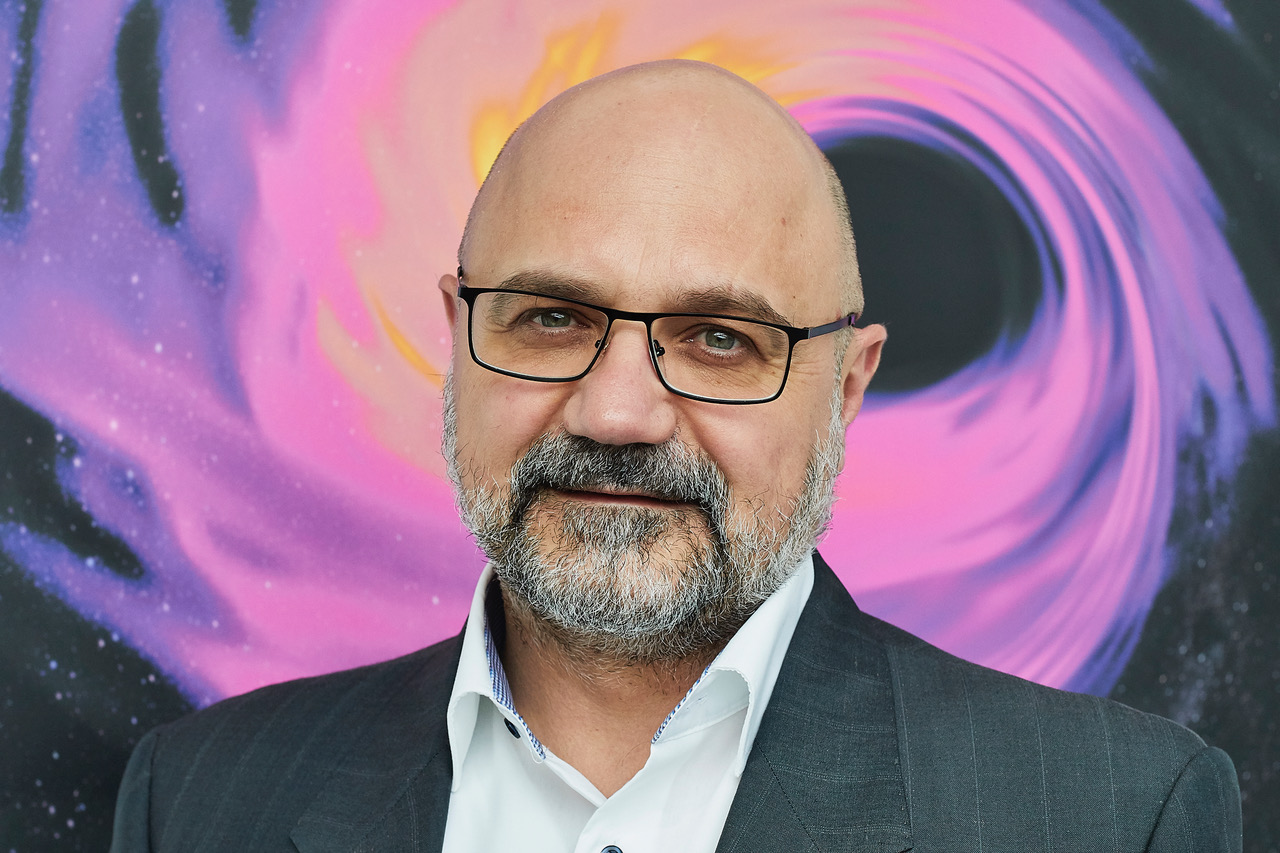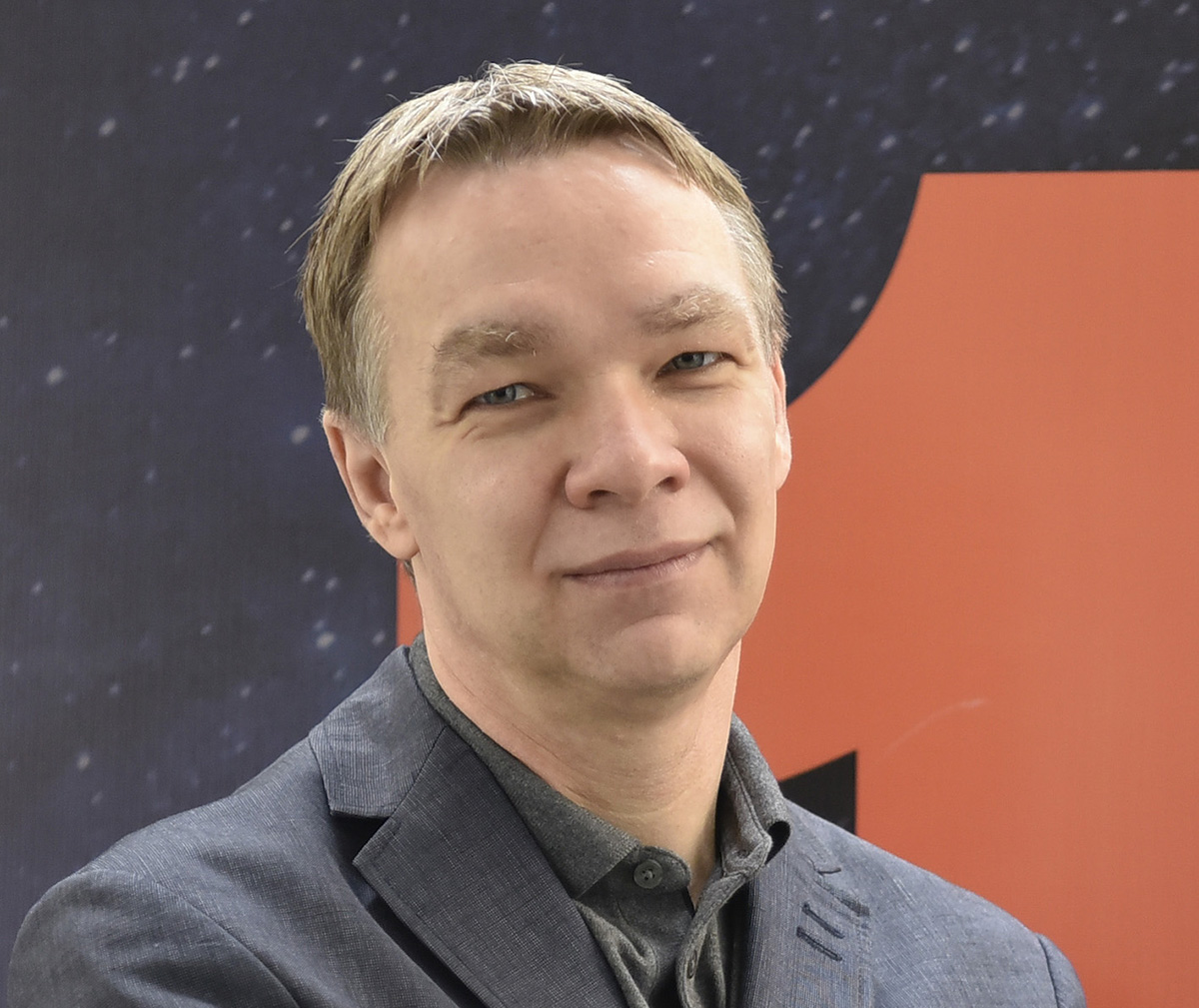The first-ever image of an event horizon – the gravitational boundary of a black hole beyond which light cannot escape – was revealed on 10 April and is the best evidence yet that these phenomena really do exist. It was the result of a global collaboration of hundreds of scientists, using multiple telescopes around the world to pick up the high-frequency radio waves emitted by matter pulled into the event horizon.
We spoke to Dr Heino Falcke, Dr Luciano Rezzolla, and Dr Michael Kramer, researchers on the European BlackHoleCam project – which was part of the global Event Horizon Telescope (EHT) collaboration – about what the image means for them, for black holes and for Einstein’s theory of relativity.
Dr Heino Falcke, Radboud University Nijmegen, The Netherlands
‘This is the ultimate edge of space and time’

It has been an emotional journey, I must say. It started from when I was a PhD student and I found that, at certain radio frequencies, you would have radiation coming from near the event horizon (of a black hole). That was in the early 1990s. We published a paper that said there is a shadow of a black hole that you can see using current technology, this very-long-baseline interferometry (VLBI) technology we are currently using. That was around 2000. I actually said boldly in 10 years we can do this, and now it took us 19 years. So I was off by a factor of two! But we did it.
I’ve seen many beautiful images of how a black hole should look. Most of them look better than the real image, but that very first image, you see it and you think: ‘Wow, it really looks like that’. It was such an almost emotional moment.
I’m a lay pastor. I’m ordained in Protestant church, I do services, but I’m not a professional. I talk to (people) about science and religion and to me these are natural things that go together. That did help with the science actually. As a child I’ve thought about what’s behind the universe, what’s behind the heavens, what is at the beginning? What’s before the Big Bang?
(In this experiment), everything was almost perfect. I personally had not expected us to come to such a result so early. I was braced for five years of blood, sweat and tears. It was two years of blood, sweat and tears, but those were intense years. It worked (observing the black hole) almost from the first day (in April 2017), but it took another year to reduce and analyse the data. In summer 2018 we made the first images and then in April 2019 we published.
I think this could be the start of an exciting new era. For the first time we see the event horizon and we can also study relativity and general relativity on a scale never possible before. This decade really is the decade of studying black holes like never before. We always knew they should be there, they were theoretical concepts. This is the ultimate edge of space and time.
Everything we see fits perfectly the prediction that is given by relativity. (Stephen) Hawking would have probably had the same reaction I had, having thought about these things theoretically. It would have been absolutely an emotional moment, but he died a little bit too early to see that. Einstein actually had to wrestle with the concept of the event horizon, and to think this actually is a real thing in the universe, it would have been completely mind-boggling to him.
Dr Luciano Rezzolla from Goethe University Frankfurt in Germany
‘This project is a testament to human ability to work together’

The telescopes we used are radio telescopes, which collect radio waves. A black hole is very small, unfortunately, and the black holes we are looking at are very far from us, either at the centre of our galaxy or the centre of a nearby galaxy. What you want is the ability to see images from the very centre of these objects and for this you need a high resolution.
Even the largest telescopes we have on Earth wouldn’t be sufficient. The resolution we need would allow you to see an orange on the surface of the moon. So if you can’t build a telescope bigger than a few hundred metres, maybe you can put together two telescopes which are far apart and imagine they are together a single telescope?
This is called radio interferometry and the technique we’ve used is called very-long-baseline interferometry (VLBI). The idea is to take two telescopes and put them as far apart as possible, say one at the South Pole and one in France, and make sure they are observing the same source at exactly the same time.
You can do even better than that by having more than two telescopes. We observed with eight simultaneously, so that as Earth rotates, there are three or four that are always pointing to the right source. And then you have to put (the data) together. This may seem a trivial step, but it’s one which cost us a lot of time. You cannot just transfer this data by internet (because there’s so much), so you have to actually take the data in hard disks and ship it over different continents.
We have built an image that we believe is consistent with what we would expect from a curved black hole in general relativity. That is the theory that Einstein formulated that provides very simple information for this type of phenomenon. The source is M87, a galaxy which is nearby to us. It is about 1,000 times bigger than the black hole in the centre of our galaxy.
I am an avid sailor and about one year ago around this time, I was sailing the Atlantic from east to west. And there was a very pleasant opportunity for me to look at the sky in uncontaminated light, as uncontaminated as it gets. It really makes you feel very small and how lucky we are to be on this planet.
This project is a testament to human ability to work together. Humans have all sorts of difficult aspects, but it’s nice to see that passion for science and knowledge can break all of these short-sighted and self-centric views, and can push and motivate hundreds of people to work together towards obtaining a result that is bigger than each of us.
Our view was that funding this would allow us to take the first picture of a black hole and this picture would go in every textbook. I hope this is what’s going to happen. Now we know what a black hole looks like.
Dr Michael Kramer, Max Planck Institute for Radio Astronomy, Germany
‘History books will be divided into the time before the image and after the image.’

Black holes have had a chequered history. They were proposed as a consequence of general relativity, but the concept of black holes is much older and goes back to the 18th century. And though the solution existed, there were theoretical problems in understanding the space-time near the event horizon. There was no observational evidence for black holes basically until the 1960s.
Then with the discovery of quasars (super-heated material swirling around a black hole) and also X-ray binaries (a neutron star or black hole sucking material from a star), black holes suddenly became necessary (to explain them). We needed a very energetic way of converting energy into radiation that is so strong that we can still see it at very, very large distances.
Our next best evidence came from observations of so-called S-stars orbiting a massive object in the centre of our galaxy. This object was not seen but you can calculate the mass, in this case about 4 million solar masses. And it turns out the best evidence seems to be a supermassive black hole.
Then of course LIGO (the Laser Interferometer Gravitational Wave Observatory) came along (which detected merging black holes via gravitational waves), and this was by far the best evidence we had so far on the existence of black holes. So the idea of the Event Horizon Telescope is thereby that for the first time, we see a shadow (of a black hole). There are some unique features that only an event horizon will produce, like a bright ring of photons trapped before they’re plunged into the event horizon. And that’s what we see.
The data quality is not like what we may have seen in movies like Interstellar, but all the features are there. The image shows all the features you would expect from a black hole and an event horizon. You see a photon ring, you see a bright ring around the black hole and you see a shadow in the middle.
This is a supermassive black hole and it is six billion solar masses, so that gives you (a diameter) of billions of kilometres. But because it’s so wide, we can see it in this relatively large distance of 53 million light-years. For now, we have concentrated efforts on M87 and once that is out, we will focus our attention on Sagittarius A* (the supermassive black hole at the centre of the Milky Way).
I think we were all confident we would succeed. It’s technologically pushing the boundaries, but it’s not something that we had doubts we would succeed. Still, nothing prepares you for the moment when you actually see it for the first time. It’s quite stunning.
History books will be divided into the time before the image and after the image. It is the first time that this has been possible, and it’s been long in the making. We’ve finally succeeded, and it can only get better from here.
As told to Jonathan O’Callaghan
Originally published on Horizon

